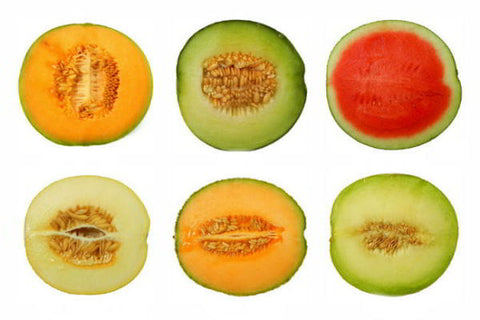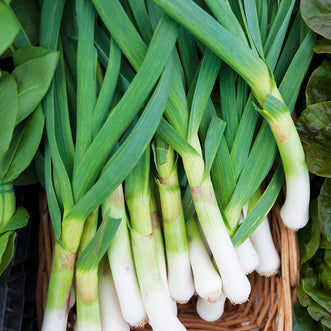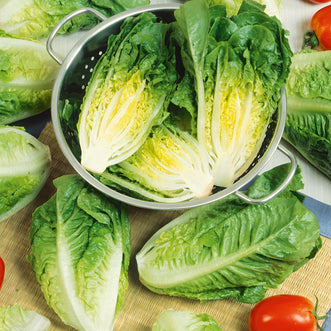
Different Types of Fruit Seeds Grown from Seed
Gerard
What varieties of fruit can be grown from seed?
The focus is often on the vegetables and herbs, microgreens and sprouts within our range.
For a change, let's give some of our fruit varieties a bit of attention - keep reading. . . . . .
NB: Lots of links to previous blogs have been included so remember to come back to this one if you click on a link :)

Passion fruit
Passion fruit is our most popular selling fruit seed. It tends to be a bit of a treat in our household so it is always nice to have a few healthy vines on the go. The vines only last for 3-5 years but giving them lots of feed helps to prolong their life. As a kid, I remember burying fish and eel remains under our vines and they went on and on for years.
Personally, I like to pick the fruit and then leave it in the fruit bowl until the skin starts to wrinkle.
The sweetness and aroma seems to intensify.
The pulp freezes really well if you have too much fruit.
If you would like to see a previous blog on Passion fruit click here.

Tamarillo
After passion fruit, Tamarillo would be our next best-selling fruit seed.
Prior to 1967, tamarillo was known as the “tree tomato” in New Zealand. As the tree tomato was growing in popularity, the New Zealand Tree Tomato Council decided to change the name to "Tamarillo" to create exotic appeal and distinguish it from the ordinary garden tomato.
The trees are fast growing and reach 5 meters. They can produce for up to 12 years.
Tamarillo is very versatile in the kitchen. Eat it as a fruit, scooped straight from the skin or chopped as a fruit salad. It makes a really nice salsa or chutney and it is great chopped in muffins and cakes. Tamarillo sauces have a lovely texture and due to the savoury overtones of the flesh, go really well with pork & chicken.

Rhubarb
Rhubarb was used back in the 16th century for medicinal purposes and then in the 19th century, it became popular as a food source. Botanically, Rhubarb is a vegetable.
Rhubarb tends to polarize people. Due to the tartness of the flesh, it is not enjoyed by everyone but many people have it growing in their garden. The redder the stalks, the sweeter the fruit. It is pretty hardy, requiring minimal attention with a bit of a feed a couple of times a year with compost, worm juice or liquid blood & bone.
When harvesting rhubarb, pull the stems away rather than cutting them. This will help to keep your plants healthy by leaving minimal foliage to rot around the corms. And the leaves are poisonous but they can be put in your compost as the oxalates will break down.

Goji Berry
This heirloom berry was introduced into our range back in July 2013. The Goji berry is well known for its antioxidant properties and are usually sold in a dried form, particularly as a healthy snack. It is referred to as a "superfood" due to the high content of essential amino acids, minerals and antioxidants and vitamin C.
The Goji is a hardy perennial and is best grown as several trees together to achieve a larger crop. Plant in free-draining soil that contains lime. Expect fruit in 2-3 years.
Here are some suggestions for adding goji berries into your diet:
Raw: First and foremost, eat them raw
Juice: Goji berries can be juiced
Tea: Goji berries can be added to a brew of tea
Smoothies: Soak a handful of goji berries in water for 10 minutes and then add to your smoothie
Trail Mix: Add dried goji berries to your favorite trail mix
Baking: Add to muffins, cakes, slices as a substitute for dried fruit
Cereal: Add to your breakfast cereal, fresh or dried

Pepino
This heirloom is a melon-like fruit that grows to the size of an orange. The flesh is sweet and melon-like but doesn't have the musky melon flavour. This is quite a rare fruit that has a creamy/yellow skin with purple stripes and flecks from the stem. The plant is bush-like and grows 1-2 metres tall.
Pepino is not actually a melon but related to the tomato and eggplant.
Some suggestions for using pepino in your diet:
Make a delicious salad with chopped pepino and add avocado
Slightly poached, it can be served as a dessert eg. ice-cream syrup
Make a Pepino melon sorbet
Make a juice with them.

Cape Gooseberry
This heirloom is easy and prolific to grow. The growth of Cape Gooseberry is similar to the tomatillo and the papery outer shells hide the lovely yellow berry which are ready when the outer shell goes brown and dry. Personally, I like picking and eating them when they are warm from the sun but they do tend to drop from the plant when the fruit is still green. No problem, just pop them in a bowl and leave them to ripen in their husk. They keep for months like that. A word of caution; eating the fruit when they are still green is not a good idea as they can be poisonous if eaten in large quantities.
The Cape Gooseberry can be eaten fresh, dried or cooked. It is used in Mexican cuisine, made into jams, pies or other desserts and are nice added to salads.
If you would like to see a previous blog on Cape Gooseberry click here

Kiwano
This heirloom is also known as a jelly melon and it is obvious why when you cut one open. The flesh is green and jelly-like. The taste is unusual being a mix of cucumber, banana and lemon giving it a nice fruity taste.
Kiwano can be eaten at any stage of ripening, but when over-ripe, it will burst open to release its seeds.
It is one of the few water sources in the Kalahari Desert in the dry season and originates from Africa.
A plant can produce up to 100 fruit in a season and grows up to 3m long. It will happily be trained up a trellis and is an annual.

Melons & Watermelons
Watermelon (Citrullus lanatus) tend to be larger fruit with harder skins.
Rockmelon (Cucumis melo) are softer fruit with flesh that has a musky aroma.
Here is a link to a previous blog on melons.

Tomatoes
I remember learning a very long time ago about tomatoes being a fruit. A very popular quiz question!! We have several different blogs about tomatoes so I will leave it at that. Go to the blog index by clicking here if you would like to read some more blogs about all the different tomatoes. We have approx 75 varieties in our range. Something for everyone!
A Footnote......
A couple of years ago the fruit varieties were sprinkled throughout the Gourmet Vegetable category of the catalogue. This was changed, and they were grouped under "F" for fruit.
So that's where you will find these items, if they are not appearing in the catalogue alphabetically.
No problem online though, just search by name.



















































